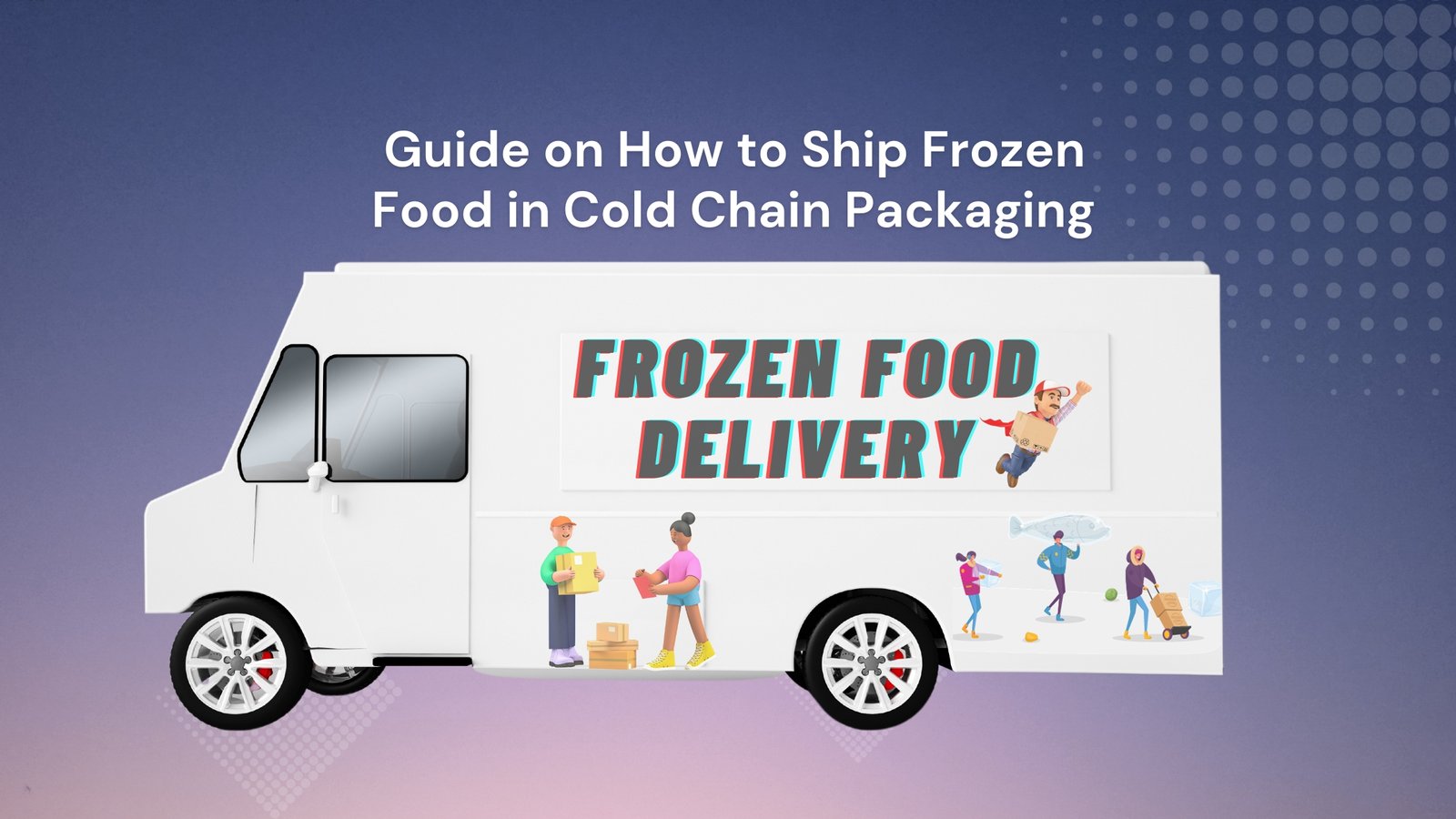Shipping frozen food is a delicate process that demands accuracy and care to ensure your products reach their destination in perfect condition. Whether you’re a food supplier or an individual sending a special treat to a loved one, understanding the difficulty of shipping perishable items is crucial. In this comprehensive guide, we will walk you through the steps of shipping frozen food, highlight the common challenges, and provide tips to maintain the highest quality standards in your frozen food packaging for shipping.
Common Challenges of Shipping Food:
Spoilage:
Proper packaging is key to preventing spoilage during transit. Using watertight plastic bags and additional insulation, such as bubble wrap, helps maintain the temperature and prevents leakage, bacterial cross-contamination, and exposure to humidity and heat.
Extreme Temperatures:
Fluctuations in temperature can affect the texture and taste of frozen food. Insulated containers with materials like Styrofoam, foam insulation, or thermal bubble wrap can help maintain a stable temperature during shipping.
Humidity:
High humidity levels can accelerate spoilage, making it essential to keep your shipment airtight and cool. Moisture can lead to food items going bad during transit, which can disappoint customers.
Damaged Products:
To prevent damage during shipping, ensure your items are well-supported and padded. Fill any empty spaces in the packaging with materials like packing peanuts and bubble wrap to minimize movement.
Supply Chain Issues:
Shipping delays due to supply chain disruptions can be mitigated by proper packaging. Robust insulation and refrigeration ensure your goods remain in optimal condition even during extended transit times.
The Best Way to Ship Frozen Foods or Perishable Foods:
Wrap Frozen Foods Properly:
Ensure meticulous attention to detail when packaging each item, employing watertight plastic bags to enhance their protection. If required, tailor your packaging materials to suit the specific needs of different food items, guaranteeing their safe and secure transportation. This tailored approach ensures that each product arrives in the best possible condition, ready for your enjoyment.
Choose Containers with Excellent Insulation:
Select quality containers that provide superior insulation, such as Styrofoam containers with foam insulation or dry ice boxes. You can also add insulation to cardboard boxes using insulated foam planks, box liners, thermal bubble wrap, cold packs, or foam bricks.
Select the Best Refrigerant:
Use water-based refrigerants like cold packs or foam bricks, selecting an appropriate weight and dimension ratio for your shipment. Alternatively, consider using dry ice for items like ice cream, but be cautious as it can be categorized as hazardous material by some shipping companies.
Control Melting and Thawing:
Line cardboard boxes with thick plastic and absorbent mats to prevent leaks in case of melting or thawing. Ensure food items are placed in watertight plastic bags, and consider double bagging for certain items like seafood.
Limit Movement:
Minimize movement within the packaging by eliminating empty spaces and using packing materials like packing peanuts and bubble wrap. Provide at least two to three inches of padding for added protection.
Seal and Label Securely:
Seal your boxes securely with pressure-sensitive adhesive tape and label them accurately, following any specific labeling requirements set by your shipping company. Double-check addresses to ensure accurate delivery.
Maintain High-Quality Standards When Shipping Your Frozen Food:
As a food supplier, it’s vital to uphold high-quality standards to protect your reputation and avoid potential consequences such as dissatisfied customers, financial loss, food wastage, legal complications, and reputation damage. The utilization of proper packaging and insulation can help you achieve these standards and ensure your frozen food arrives in excellent condition. Embracing cold chain packaging solutions offers a multitude of benefits, including enhanced product quality, extended shelf life, reduced spoilage, and improved customer satisfaction, ultimately contributing to the overall success and credibility of your business.
Conclusion:
Shipping frozen food requires meticulous planning and the right cold chain packaging to overcome the common challenges associated with perishable goods. By following the step-by-step guide outlined in this article, you can increase the likelihood of your frozen food arriving at its destination in pristine condition. To maintain high-quality standards in frozen food packaging for shipping, it is essential to rely on reliable shipping services and packaging solutions. Reliable shipping services are crucial components of maintaining product quality and customer satisfaction in the frozen food industry.
